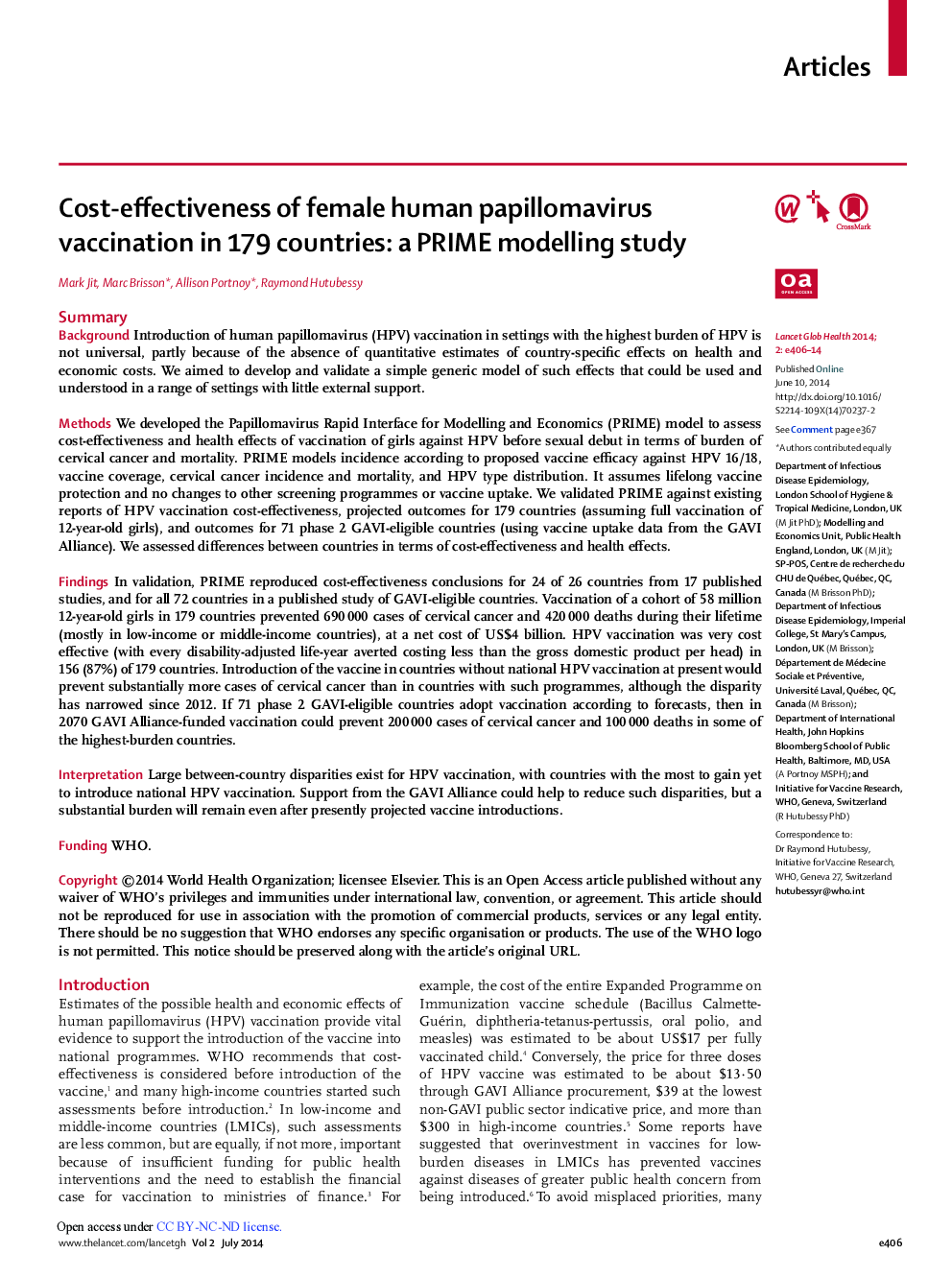| Article ID | Journal | Published Year | Pages | File Type |
|---|---|---|---|---|
| 3409440 | The Lancet Global Health | 2014 | 9 Pages |
SummaryBackgroundIntroduction of human papillomavirus (HPV) vaccination in settings with the highest burden of HPV is not universal, partly because of the absence of quantitative estimates of country-specific effects on health and economic costs. We aimed to develop and validate a simple generic model of such effects that could be used and understood in a range of settings with little external support.MethodsWe developed the Papillomavirus Rapid Interface for Modelling and Economics (PRIME) model to assess cost-effectiveness and health effects of vaccination of girls against HPV before sexual debut in terms of burden of cervical cancer and mortality. PRIME models incidence according to proposed vaccine efficacy against HPV 16/18, vaccine coverage, cervical cancer incidence and mortality, and HPV type distribution. It assumes lifelong vaccine protection and no changes to other screening programmes or vaccine uptake. We validated PRIME against existing reports of HPV vaccination cost-effectiveness, projected outcomes for 179 countries (assuming full vaccination of 12-year-old girls), and outcomes for 71 phase 2 GAVI-eligible countries (using vaccine uptake data from the GAVI Alliance). We assessed differences between countries in terms of cost-effectiveness and health effects.FindingsIn validation, PRIME reproduced cost-effectiveness conclusions for 24 of 26 countries from 17 published studies, and for all 72 countries in a published study of GAVI-eligible countries. Vaccination of a cohort of 58 million 12-year-old girls in 179 countries prevented 690 000 cases of cervical cancer and 420 000 deaths during their lifetime (mostly in low-income or middle-income countries), at a net cost of US$4 billion. HPV vaccination was very cost effective (with every disability-adjusted life-year averted costing less than the gross domestic product per head) in 156 (87%) of 179 countries. Introduction of the vaccine in countries without national HPV vaccination at present would prevent substantially more cases of cervical cancer than in countries with such programmes, although the disparity has narrowed since 2012. If 71 phase 2 GAVI-eligible countries adopt vaccination according to forecasts, then in 2070 GAVI Alliance-funded vaccination could prevent 200 000 cases of cervical cancer and 100 000 deaths in some of the highest-burden countries.InterpretationLarge between-country disparities exist for HPV vaccination, with countries with the most to gain yet to introduce national HPV vaccination. Support from the GAVI Alliance could help to reduce such disparities, but a substantial burden will remain even after presently projected vaccine introductions.FundingWHO.
